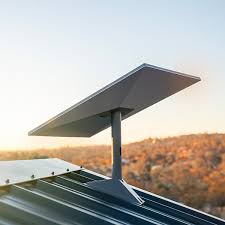
The first week of January saw SpaceX launch their first 6 satellites to support their new ‘Direct to Cell’ product. This brings them steps closer to Starlink’s constellation of ultrafast broadband LEO (Low Earth Orbit) satellites being able to offer a global 4G mobile service.
A Quick Starlink 101
Here is some basic information if you’re new to everything Starlink satellite broadband.
Starlink LEO Satellites
At the moment, Starlink have a network of 5,289 LEO satellites. They orbit the Earth at an altitude of around 500km.
SpaceX Starlink has approval to expand this number to approximately 7,500 satellites by the end of 2027.
Cost of Starlink Satellite Broadband
For UK customers costs start at £75 per month. There is an additional cost for the £449 regular home kit which includes a standard dish, router and relevant kit. There is also a shipping fee of £20 on the Standard package.
Starlink Broadband Speed
The Standard Starlink broadband package promises download speeds of between 25 and 100 Mbps and upload speeds of 5-10 Mbps. It also offers latency times of 25-50 ms.
What’s New for SpaceX Starlink Satellite Broadband?
SpaceX Starlink signed agreements back in 2022 enabling them to launch a global space-based 4G mobile network.
The network will be called Direct to Cell and will connect satellites to unmodified smartphones on the ground.
How will the Starlink 4G Network work?
The satellites with the capability to connect from space to Smartphones on the ground will have an advanced eNodeB modem onboard. This allows network integration similar to a standard roaming partner, essentially acting like a cellphone tower in space.
Supported by mobile operator T-Mobile, originally the first beta test products were supposed to launch by the end of 2023 in select areas of the USA (for example Hawaii, parts of Alaska, Puerto Rico). With the launch of the first 6 at the beginning of January this year, things are obviously running a little behind.
These first 6 Direct to Cell capable Starlinks were launched aboard a Falcon 9 rocket alongside a batch of 15 other Starlink birds.
The testing phase is expected to eventually involve 840 4G capable satellites, transmitting 4G mobile to roughly 2,000 unmodified Smartphones on the ground.
According to SpaceX, they plan to launch a basic text service sometime this year, offering SMS, MMS and ‘participating messaging apps’ messaging.
Voice services (ie. the ability to make calls) and data services (being able to use a slow mobile broadband connection) is due to follow sometime next year (2025). 2025 will also hopefully see the ability to connect to Internet of Things (IoT) devices.
Will we be able to use Starlink 4G mobile in the UK?
Unfortunately at this stage, Starlink doesn’t have supporting access agreements for these services with any cellular providers in the UK. We are one of a few countries with cellular providers yet to support Starlink 4G mobile.
Hopefully we will know soon who it’s likely to be! Both Vodafone and EE (BT) have experience with satellite solutions (they are testing rival systems!) so they may be the ones to watch.
Who Are Starlink’s Current Global Direct to Cell Partners?
Providers who are ready to support Starlink 4G mobile in some countries are:
T-Mobile (USA)
Optus (Australia)
Rogers (Canada)
One NZ (New Zealand)
KDDI (Japan)
Salt (Switzerland)
ENTEL (CHILE)
Entel (PERU)
Can Starlink 4G Mobile Compete With Our Current 4G Mobile Broadband Offering?
At this stage, not really. Elon Musk has himself said that these first Direct to CEll capable Starlink satellites can only support data speeds of “~7Mb per beam and the beams are very big, so while this is a great solution for locations with no cellular connectivity, it is not meaningfully competitive with existing terrestrial cellular networks.”
In other words, Starlink 4G Mobile services will be beneficial to those in rural areas that struggle with more traditional forms of broadband connectivity and 4G cellular networks, but not to those already reliably using 4G networks.
For those that want the tech bit – Information shared last year on the subject detailed that the Direct to Cell system will be able to provide “theoretical peak speeds of up to either” 3Mbps or 7.2Mbps peak upload (Earth-to-Space) over 1.4MHz or 5MHz bandwidth channels per beam, respectively, and up to either 4.4Mbps or 18.3Mbps on the downlink (Space-to-Earth) over the same bandwidth channels per beam using LTE (4G) technology.
It’s also worth remembering that we don’t yet know the costs of this type of global roaming. To compete with traditional roaming services, it’s going to need to be a competitive cost. Although, those who struggle to get any connection at all where they’re based may be willing to pay a bit more if it means getting a reliable connection.
What Potential Issues Might Starlink 4G Mobile Be Facing?
SpaceX are already facing some challenges in the USA. There are concerns about spectrum interference, particularly from AT&T (formerly known as the American Telephone and Telegram Company) who are also in the testing stages of a rival solution AST SpaceMobile and Omnispace who are also combining mobile roaming with the scope of satellite for a global 5G network.
There are likely to be similar disputes in other markets too, seeing as the Starlink 4G network needs reciprocal access and spectrum agreements with mobile operators. They will also need support from regulators and ground stations across the world.
Starlink 4G Mobile via satellites from SpaceX is certainly an intriguing development and we’re keen to see how this plays out throughout 2023 and beyond. Let’s watch this space!



